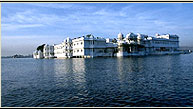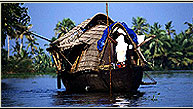-| People & Culture | -

Over centuries, isolated cultures have developed in the Himalayas. Some valleys
which long remained unknown for political and geographic reasons , have retained
a unique character. To the west ,Ladakh , Spiti and Lahaul are typical examples
of isolated valleys which have preserved their Buddhist heritage. Apart from
the Tibet ,Ladakh is one of few regions where Tibetian Buddhism still survives.
Until a few years ago, Ladakh was one of the very few places that had not been
affected by the Western monoculture that had spread across the entire world.
The original population is Dards, and Indo-Aryan race from down the Indus. But
immigration from Tibet, perhaps a millennium or so ago, largely overwhelmed
the culture of the Dards .The faces and physique of the Ladakhis, and the clothes
they wear, are more similar to those of Tibet and Central Asia than of India.
Ladakh is a desert,Coupled with the high altitude, Due to which it has extremely
harsh environment. therefore, the people have had to recognise that Nature has
limits. In order to survive, they have developed traditions which enable them
to live in harmony and balance with their natural environment.
According to 1981 census Ladakh has total population of about 1,40,000, &
has density population of 2 persons per square kilometer, which one of the lowest
in the world.today's population seems to be mostly of Tibetan origin. Further
west, in and around Kargil, the people's appearance suggests a mixed origin.
This land has an interesting mixture of diverse ethnic and cultural groups.
They have embraced Buddhism, Islam, Christianity and Hinduism. The Ladakhi people
are known for their humanity , honesty & Friendly nature.This may have something
to do with the fact that if you lived in these barren and inhospitable surroundings,
any new face, even that of a stranger, is more than welcome.
In the past , Ladakh and Spiti established close relations with Lhasa , which
explains why today their architecture and way of life are very similar to that
of the people of central Tibet . With the Tibet and Xingjiang regions of China
to the east and north - west , and Pakistan to the west , Ladakh occupies a
key strategic position. For this reason , it was barred to visitors for more
than 25 years before being opened to tourism in 1974.
Ladakh Tour Reservation Form




